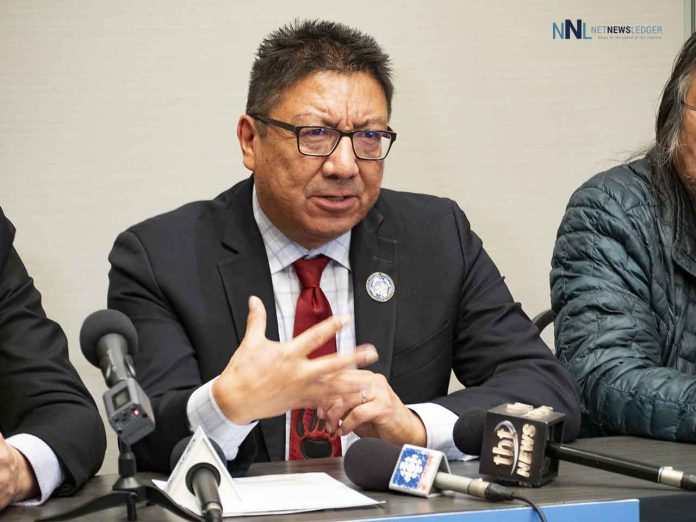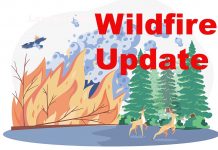Thunder Bay – NEWS – Nishnawbe Aski Nation (NAN) Grand Chief Alvin Fiddler handed a report outlining a First Nation-specific emergency management concept to Ontario Premier Doug Ford during his visit to Thunder Bay today.
“The issues around emergency management are becoming more critical for First Nations communities,” states the NAN Grand Chief.
“Ontario’s approach is failing, and our communities must have the capacity to manage on their own and be empowered to look after their members. The emergency management concept we have presented outlines this and is the direction the province should be heading in.”
“This is the foundation for action towards a holistic and successful approach to emergency management. As we advance this work, it is vital that our federal and provincial Treaty partners acknowledge the identified issues and gaps and accept the recommendations to develop a successful and culturally appropriate service delivery model that supports and empowers First Nations communities,” adds the Grand Chief.
Deficiencies and gaps in emergency management for First Nation communities is a significant concern, especially during this forest fire season.
Several communities are concerned that their community’s trained persons who have taken required training for fighting wildfires are being left on the sidelines while Ontario brought in firefighters from Mexico.
The lack of a tripartite agreement has led to ineffective implementation of Canada’s ‘All-Hazards Approach’ and stymied meaningful partnerships between First Nations and the federal and provincial governments.
The report, Emergency Management for First Nations in Ontario, provides 20 recommendations including:
- Establish clear roles for the federal and provincial governments, and First Nations through tripartite agreements.
- Maintain the distinction between an “emergency” and “disaster”, where an “emergency” focuses on institutional response, and a “disaster” focuses on the degree of harm.
- Scale the definition of “disaster” to each individual First Nation, focusing on each First Nation’s ability to cope as a benchmark.
- Eliminate the distinction between social emergencies and other types of emergency hazards or provide dedicated funding for social emergencies.
- Create a mechanism to empower emergency declarations by First Nations.
- Ensure that all pillars of emergency management are conceptualized as a “disaster cycle” with all pillars given equal consideration, and contribute resources to pre-disaster pillars.
- Develop remoteness indices/indicators specific to emergency management and apply the remoteness indices/indicators to First Nations in Ontario.







